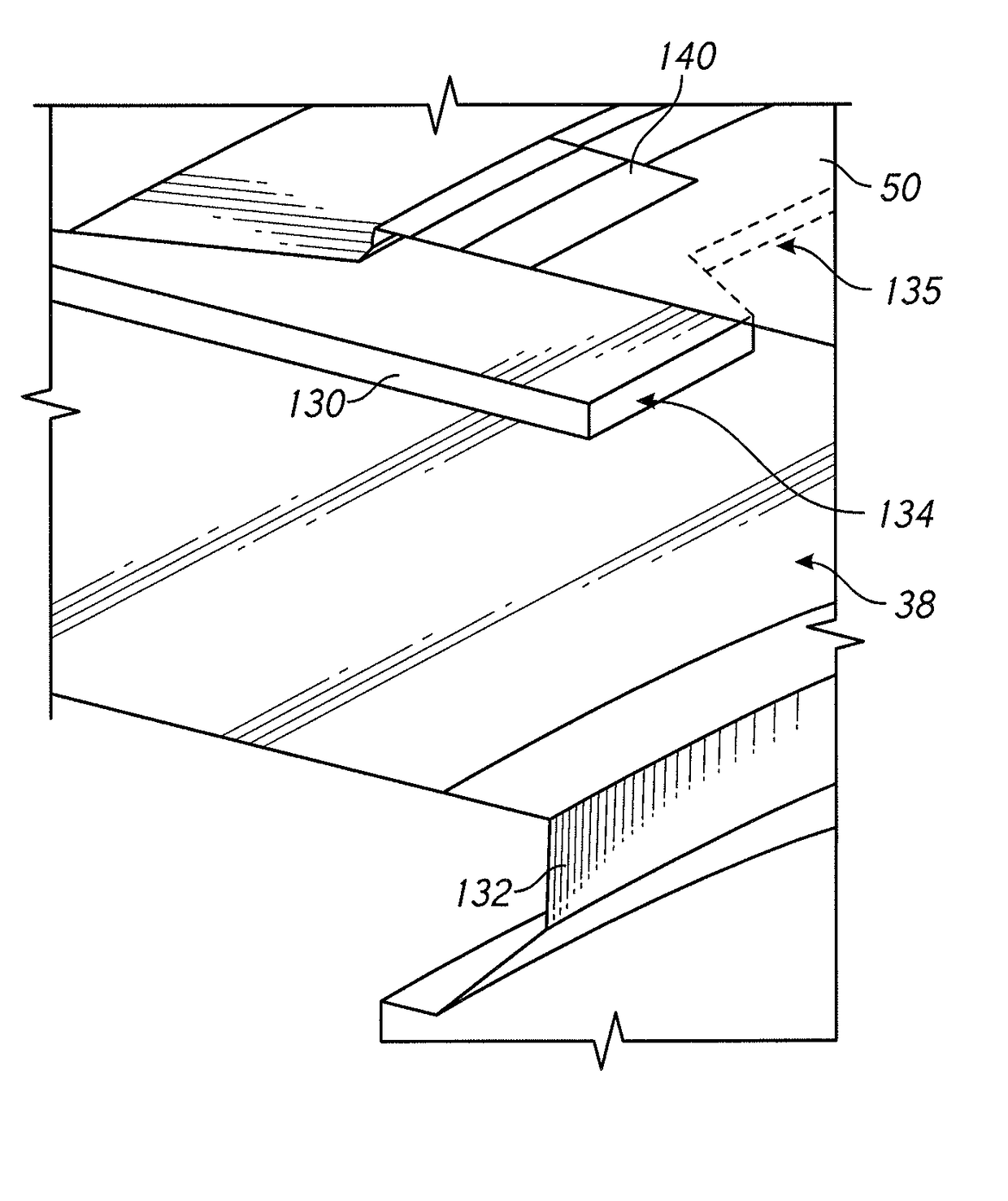Electroplating wafers having a notch
a technology of electroplating wafers and notch edges, which is applied in the direction of electrolysis components, electrolysis processes, contact devices, etc., can solve the problems of non-uniform plating, reducing the yield of the wafer, and increasing the time requirements and complexity of the manufacturing process, so as to reduce the current crowding effect, thin plating, and uniform thickness
- Summary
- Abstract
- Description
- Claims
- Application Information
AI Technical Summary
Benefits of technology
Problems solved by technology
Method used
Image
Examples
Embodiment Construction
[0022]To achieve a high yield of devices from each wafer, the edge zone which is contacted by the seal must be as small as possible. In the past, an edge zone of 2 or 3 mm (i.e., the annular ring at the wafer edge not useable for manufacturing devices) was often acceptable. With current industry requirements, the edge zone is now approaching or already at 1 mm. Referring momentarily to FIG. 5, some wafers 50 have a notch 52 (enlarged for illustration). On a 300 mm diameter wafer 50, the notch 52 extends in 1.5 mm. Therefore, the seal used for processing these types of wafers has an inward projection at the notch to avoid plating fluid leaking through the notch. The resulting seal covers more of the wafer around the notch. This changes the electric field in the region around the notch, causing the plated film around the notch to be thicker than the plated film on the rest of the wafer, due to current crowding at the notch.
[0023]One method to improve uniformity near the notch is to re...
PUM
| Property | Measurement | Unit |
|---|---|---|
| perimeter | aaaaa | aaaaa |
| diameter | aaaaa | aaaaa |
| diameter | aaaaa | aaaaa |
Abstract
Description
Claims
Application Information
 Login to View More
Login to View More - R&D
- Intellectual Property
- Life Sciences
- Materials
- Tech Scout
- Unparalleled Data Quality
- Higher Quality Content
- 60% Fewer Hallucinations
Browse by: Latest US Patents, China's latest patents, Technical Efficacy Thesaurus, Application Domain, Technology Topic, Popular Technical Reports.
© 2025 PatSnap. All rights reserved.Legal|Privacy policy|Modern Slavery Act Transparency Statement|Sitemap|About US| Contact US: help@patsnap.com



